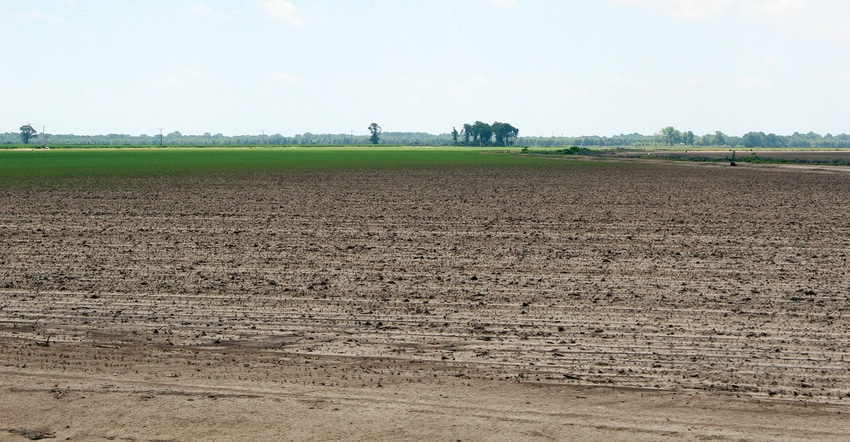
The 2019 USDA-NASS Prospective Plantings Report estimated cotton acres in Louisiana would increase from 195,000 acres in 2018 to 260,000 acres this year.
Planters started rolling in fields across the Bayou State the last week in April, and by the middle of June, the majority of producers had finished — or so they thought. “Like so many other parts of the country, Louisiana has endured an excessive amount of rainfall so far this year,” says Dr. Dan Fromme, professor, state specialist, cotton, corn, and grain sorghum, Dean Lee Research and Extension Center, in Alexandria, La. “Replanting was prevalent across certain parts of our state because of all that rain, and the problem was compounded by all the water making its way toward us from the north via the Mississippi River.”
Fromme knows that cotton planted late, or cotton that has been replanted, is going to be behind. “Early fruit retention is the foundation for eliminating the potential for rank growth,” says Fromme. “A plant’s ability to retain early fruit will also go a long way toward getting it back on track — hopefully leading to more yields and a timely harvest.”
Nitrogen is a topic Fromme has been speaking about to producers. “Excessive nitrogen will not help speed plant growth,” he says. “Too much nitrogen can lead to unnecessary vegetative growth and also delay the crop from maturing.”
With growing conditions becoming more optimal, Fromme also advises timely applications of mepiquat chloride. “Everyone needs to be vigilant in their efforts to control the rapid vegetative growth that will result from these improved growing conditions,” he adds. “Start applications early, as early as pinhead square, especially if the field has received adequate precipitation or is irrigated.”
Tim White, a farmer and consultant from Catahoula Parish, La., has seen plant bug pressure increasing. “It’s the middle of June and our plant bug pressure has ramped up. I’m advising second and third control applications on many fields. We’re going with 1.5 ounces of Transform, and in some areas we’ve started using Diamond at a rate of 6 ounces,” says White. “Fruit retention isn’t as high as I normally like to see, but right now, that doesn’t overly concern me. We’ve got time for the plants to make up for being late, but these plant bugs are putting up a fight.”
White reports that in his parish alone, there are 15,000 acres that will never be planted due to widespread flooding from backwater. “I heard some gins in the northern part of our state told their grower customers that if they planted more cotton than they originally had told the gin they would plant, they needed to find another place to gin it,” says White. “We’ve had a fair number of acres replanted around my area, but not too many.”
Veteran crop consultant Reynold Minsky lives in East Carroll Parish, La., which is bordered on the east side by the Mississippi River. Louisiana has a large number of cotton acres adjacent to the river just on the other side of the levee. “The problem is, water has been seeping through the levee and has flooded thousands of those acres. Six of my farmer clients have land close to where the levee broke in 2011, and they won’t get anything planted this year,” says Minsky. “One of my bigger customers has 3,000 acres completely underwater.”
Minsky agrees that if it were not for the high water, Louisiana may have been close to those initial USDA-NASS Prospective Plantings estimates. “I just don’t see it now,” he adds.
About the Author(s)
You May Also Like




